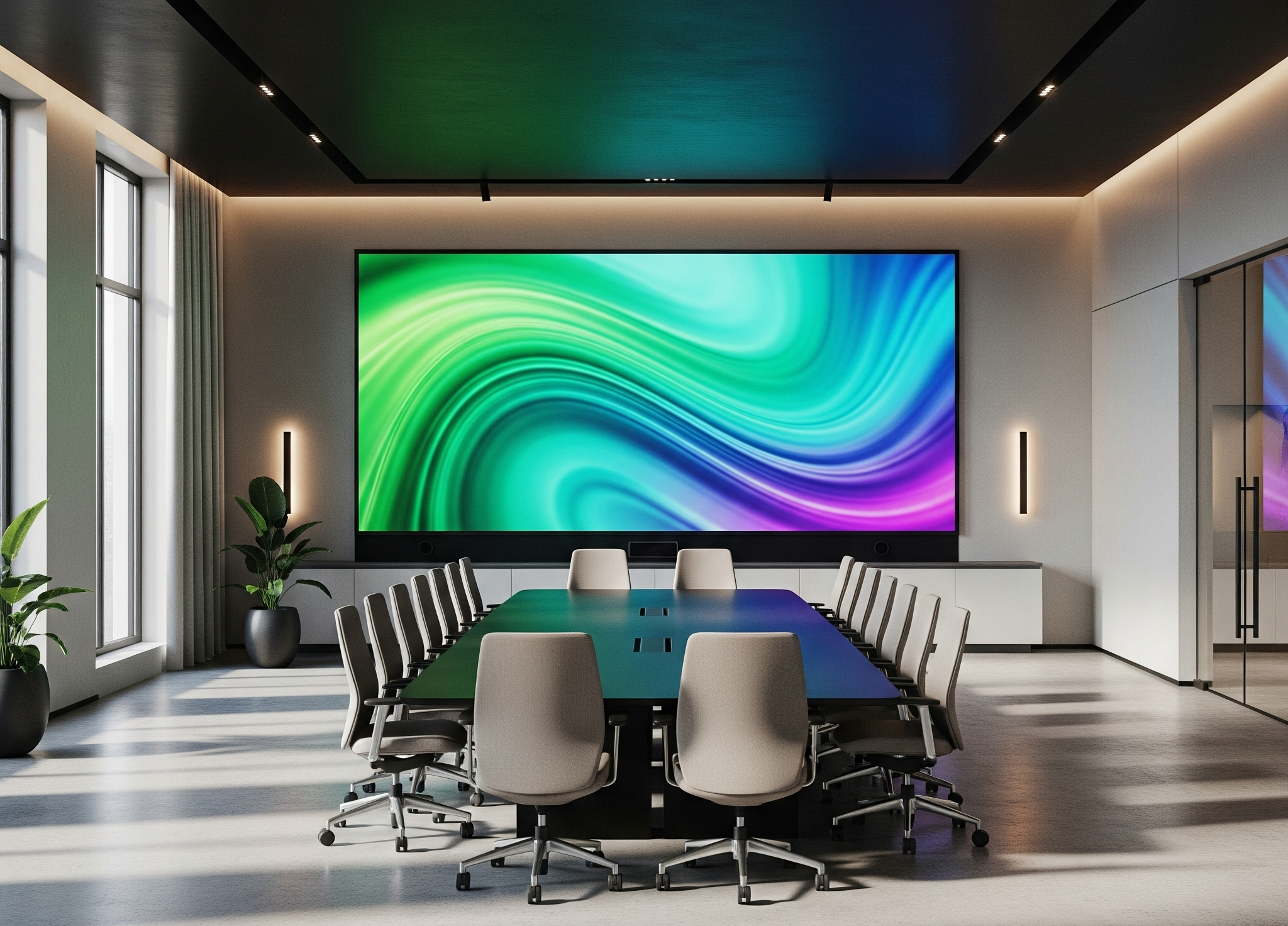
The Future is Now: Immersive, Intelligent, and Seamless Video Conferencing in 2025
The evolution of video conferencing has transcended basic visual communication, transforming into a sophisticated ecosystem of immersive, intelligent, and seamless collaboration. In 2025, we witness a paradigm shift, where virtual interactions rival, and in some cases, surpass, the efficacy of physical meetings.
AI: The Architect of Nuanced Virtual Interactions
Artificial intelligence has become the linchpin of advanced video conferencing. Platforms are integrating AI not as a mere add-on, but as a core component, refining every aspect of the meeting experience:
-
Advanced Audio Processing:
- AI-driven noise suppression algorithms now employ deep learning models to distinguish between human speech and ambient noise with remarkable accuracy. These systems analyze audio waveforms in real-time, isolating and enhancing vocal frequencies while suppressing background distractions such as keyboard clicks, rustling papers, and distant conversations.
- Directional audio processing, aided by AI, allows for the pinpointing of sound sources, enabling dynamic noise cancellation and focused audio capture.
-
Intelligent Video Analysis:
- AI algorithms analyze video streams to optimize lighting, color balance, and focus, ensuring consistent visual clarity regardless of environmental conditions.
- Facial recognition and tracking algorithms enable automatic framing and speaker tracking, dynamically adjusting the camera view to focus on active participants.
- AI-powered virtual background technology has progressed beyond simple image replacement, now employing depth sensing and segmentation to create realistic and seamless virtual environments.
-
Meeting Automation and Insights:
- Real-time transcription services, powered by advanced speech-to-text models, provide accurate and searchable records of meeting conversations.
- AI-driven summarization tools analyze meeting transcripts to extract key topics, action items, and decisions, generating concise and actionable summaries.
- Sentiment analysis algorithms analyze verbal and nonverbal cues to gauge participant engagement and identify potential areas of concern.
-
Smart Room Integration:
- AI systems are being used to automate room functions. This includes automatic camera and microphone calibration, environmental control of lighting and temperature, and predictive maintenance of hardware.

Beyond the Grid: Crafting Immersive Virtual Spaces
The limitations of the traditional grid view are being addressed through innovative approaches to spatial design and interaction:
-
Spatial Audio and 3D Environments:
- Spatial audio technologies employ binaural recording and processing to create a sense of three-dimensional sound, enabling participants to perceive the location of sound sources within the virtual space.
- 3D virtual environments, rendered using advanced graphics engines, create immersive meeting spaces where participants can interact with virtual objects and navigate through shared environments.
-
Augmented and Virtual Reality Integration:
- AR/VR headsets are being integrated with video conferencing platforms to create holographic meeting experiences, where participants appear as virtual projections in shared physical or virtual spaces.
- Collaborative AR/VR applications enable participants to interact with 3D models and data visualizations in shared virtual environments, fostering enhanced collaboration and problem-solving.
-
Hybrid Meeting Optimization:
- 360-degree cameras and microphone arrays capture a comprehensive view of meeting rooms, enabling remote participants to experience the nuances of in-person interactions.
- AI-powered speaker tracking and framing algorithms ensure that remote participants can clearly see and hear active speakers in the meeting room.
Hardware Innovations: Precision and Performance
The advancements in video conferencing hardware are driving the evolution of virtual communication:
-
High-Resolution Cameras and Sensors:
- 4K and 8K cameras with advanced image sensors capture detailed visual information, enabling clear and lifelike video transmission.
- Depth-sensing cameras and LiDAR sensors enable accurate 3D mapping and object tracking, enhancing the realism of virtual environments.
-
Advanced Microphone Arrays and Speakers:
- Beamforming microphone arrays and noise-canceling microphones capture clear audio even in noisy environments.
- High-fidelity speakers and spatial audio systems deliver immersive sound experiences.
-
Dedicated Video Conferencing Devices:
- All-in-one video bars and conferencing systems integrate cameras, microphones, speakers, and processing capabilities into compact and user-friendly devices.
- Modular video conferencing systems provide flexibility and scalability for various meeting room configurations.
-
Touch-Enabled Control Panels:
- Control panels provide a easy to use interface to control all aspects of the video conference.

Security and Reliability: Building Trust in Virtual Interactions
The increasing reliance on video conferencing necessitates robust security and reliability measures:
-
End-to-End Encryption:
- End-to-end encryption ensures that meeting data is protected from unauthorized access during transmission.
-
Multi-Factor Authentication:
- Multi-factor authentication adds an extra layer of security, requiring users to provide multiple forms of identification1 before accessing meeting platforms.
-
Redundant Network Infrastructure:
- Redundant network infrastructure and failover mechanisms ensure uninterrupted connectivity during meetings.
-
Security Audits and Compliance:
- Regular security audits and compliance certifications demonstrate a commitment to data protection and privacy.
The future of video conferencing lies in the seamless integration of AI, immersive technologies, and high-performance hardware, creating virtual experiences that are both engaging and productive.
More details at www.BGaudiovisual.com.au



